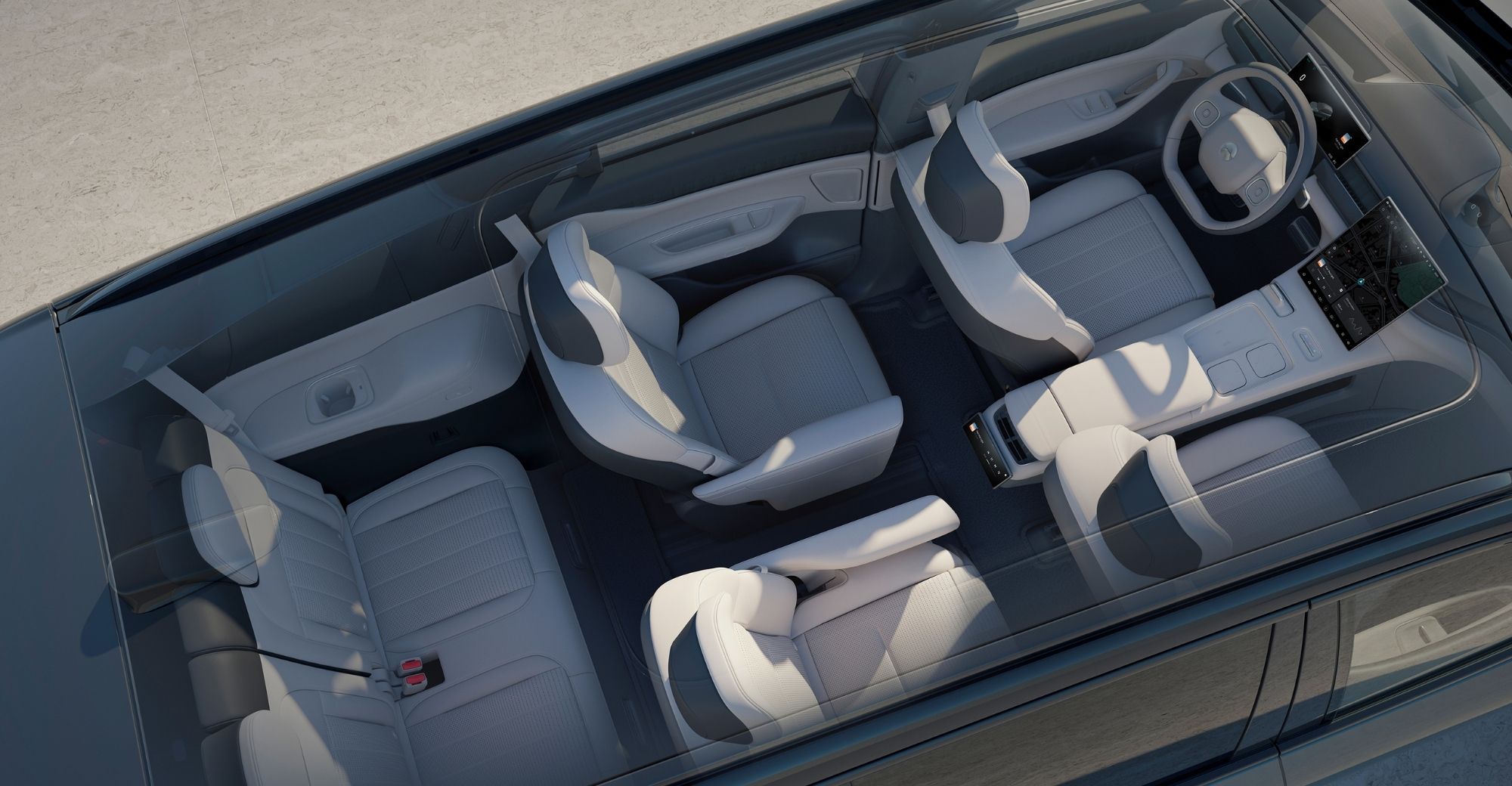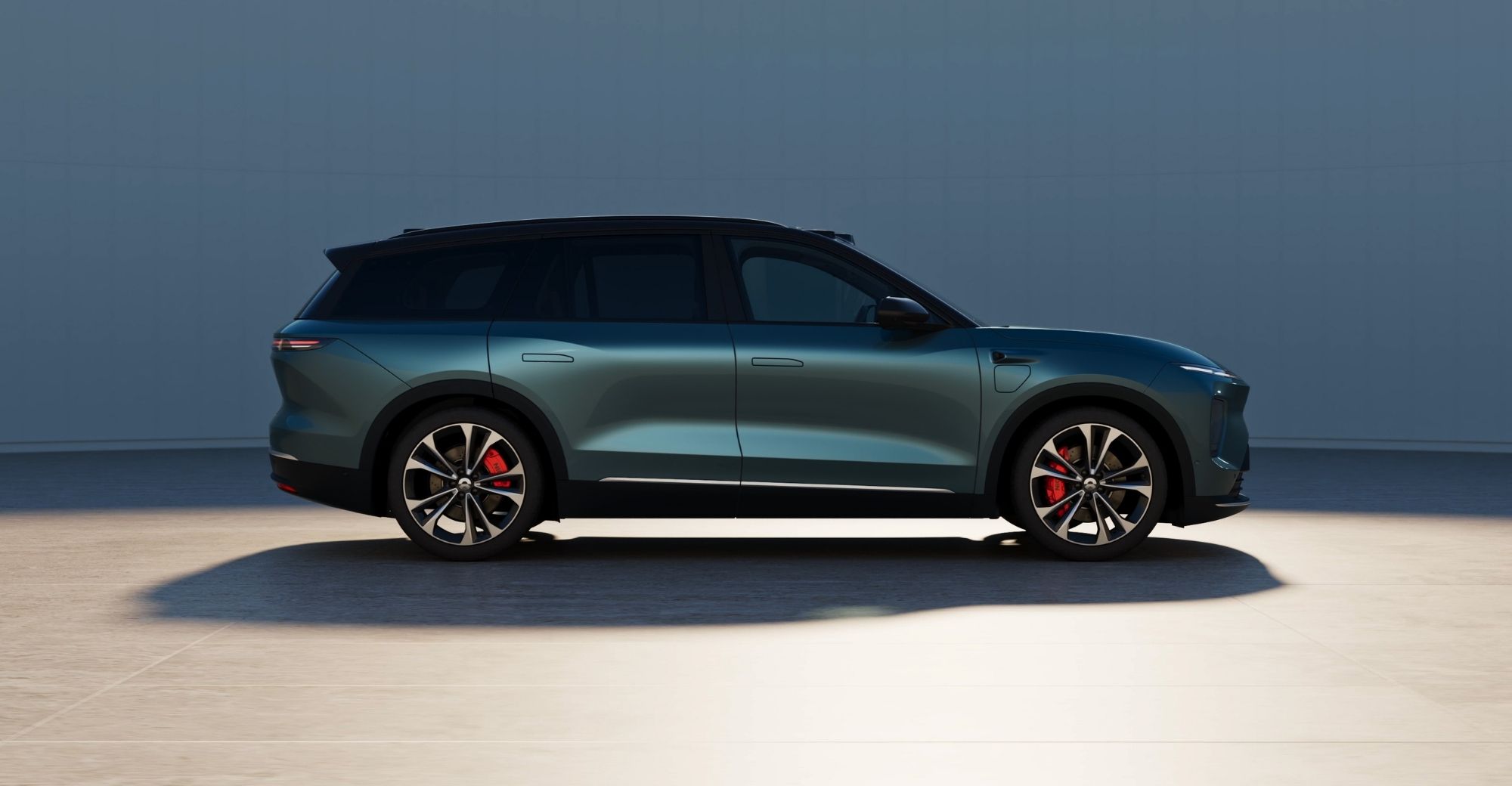
NIO Releases EC7 and ES8 EVs, Unveils Third-Generation Battery Swap Station
Want to read in a language you're more familiar with?
On December 24, Chinese automotive firm NIO released electric flagship coupe SUV EC7 and all-new electric flagship SUV ES8. The firm also unveiled its third-generation battery swap station and commented on its mobile phone business and a recent data leakage incident.
On December 24, Chinese automotive firm NIO released electric flagship coupe SUV EC7 and all-new electric flagship SUV ES8. The former starts at 488,000 yuan ($69,944), while the latter is 32,000 yuan more expensive than the current ES8, reaching 528,000 yuan. The firm also unveiled its third-generation battery swap station and commented on its mobile phone business and a recent data leakage incident.
EC7
The combination of a 300 kW high-performance induction motor and a 180 kW high-efficiency permanent magnet motor outputs rapid mighty power and maintains power continuity and low energy consumption. The EC7 accelerates from 0 to 100 km/h in only 3.8 seconds and comes to a complete stop from 100km/h in 33.9 meters. EC7 has three battery packs, and the cruising range under CLTC conditions is 490 km to 940 km.
With a drag coefficient as low as 0.230cd, the EC7 is now the SUV with the lowest drag coefficient in the world. The EC7 comes standard with an active adjustable rear wing, a first for NIO production models, which improves the aerodynamic performance of this coupe SUV. The rear wing enables options of drag reduction and control, providing drag reduction and downforce.

The EC7's panoramic glass roof is made of double-layer sound and heat insulation glass with an area of 1.94 square meters. The third-generation flexible electrochromic (EC) technology enables five levels of adjustable transmittance to allow natural light to sprinkle into the car with extreme transparency or fully protect privacy when necessary.
New ES8
While continuing the original style, the new ES8 has a longer body size than the old model. Its enhanced head-up display system has a size of 16.3 inches, which is 2.5 times that of the original one. In addition, the central armrest of the second row serves as an "executive center" to boost an imposing ride experience with a digital layer and a storage layer.
However, the new ES8 is no longer available in a seven-seat version. Firm founder William Li revealed that based on the existing sales data of ES8, the sales volume of the six-seat version is much higher than that of the seven-seat version, and it is difficult to develop a set of seat platform with good experience for the third row alone, so a trade-off was made.

The two models are equipped with NIO's latest Banyan intelligent system, powered by full-stack technologies such as Aquila, a super sensory system equipped with 33 high-performance sensors including LiDAR, and Adam, a super computing platform with computing power up to 1016T enabled by four Orin X chips.
According to the company's plan, the EC7 and the new ES8 will be delivered in March and June next year respectively. In the next six months, NIO will complete the iteration to the second generation platform for all models. This means that NIO will sell at least eight model types next year.
Li pointed out that faced with the complex management of multiple models, NIO chose to achieve unity in fields that consumers can't directly perceive, such as intelligent systems, battery packs and mechanical platforms, but tried its best to meet the individual needs of users in terms of space, size and shape. "Consumers of high-end models have personalized demands, which require more specific versions with different configurations. No company can succeed only by relying on one or two popular models," said Li.

Regarding the sales forecast for next year, Qin Lihong, NIO's co-founder and president, admitted that the market competitiveness of the models with the second-generation platform will be more clearly seen in the fourth quarter of next year when the iteration of all products is completed. Li said that due to the withdrawal of subsidies for new energy vehicles, the market will bear certain pressure in the first half of next year. He believed that NIO's sales would not surpass Mercedes-Benz, BMW and Audi next year, but would surpass Lexus.
According to data from the China Passenger Car Association, in November, NIO surpassed Lexus with its delivery of 14,153 vehicles. In 2021, Lexus's sales in China reached a record high of 227,000 units, an increase of 1% year-on-year. From January to November this year, Lexus sold 168,600 vehicles, down 16.45% year-on-year.
Third-Generation Battery Swap Station

On NIO Day, a 500kW ultra-fast charging station and third-generation battery swap station were officially released. The third-generation station adopts a new swapping mode, raising capacity to 408 swaps per day, a 30% increase compared with the second-generation version. Each equipped with two laser radars and two Nvidia OrinX chips, the third-generation battery swap station with total computing power of 508TOPS is compatible with the Automatic Summon & Swap feature, where the station is able to communicate with the car and automatically navigates the car. Moreover, with a maximum current of 650A and a maximum power of 500kW, it takes only 20 minutes to charge the 100kWh battery pack from 10% to 80%.
SEE ALSO: Some NIO Manufacturing Assets to be Acquired by JAC Motors
Mobile Phone Business and Data Leakage Incident
"Making mobile phones is not the main business of NIO. We will focus on cars and make the best mobile phone that matches them," said Li.
NIO received an email on December 11 in which the sender claimed to have internal data and attempted to extort $2.25 million in bitcoin. This incident sounded the alarm of information security for smart car makers. Li said that he had reported the case to the police and that NIO would not compromise with blackmailers. NIO will bear the responsibility for the losses caused by data leakage. For enterprises or individuals involved in buying and selling the leaked data, NIO will initiate legal procedures.





